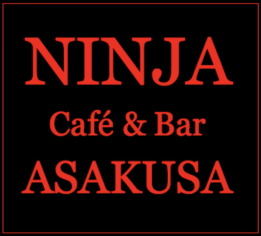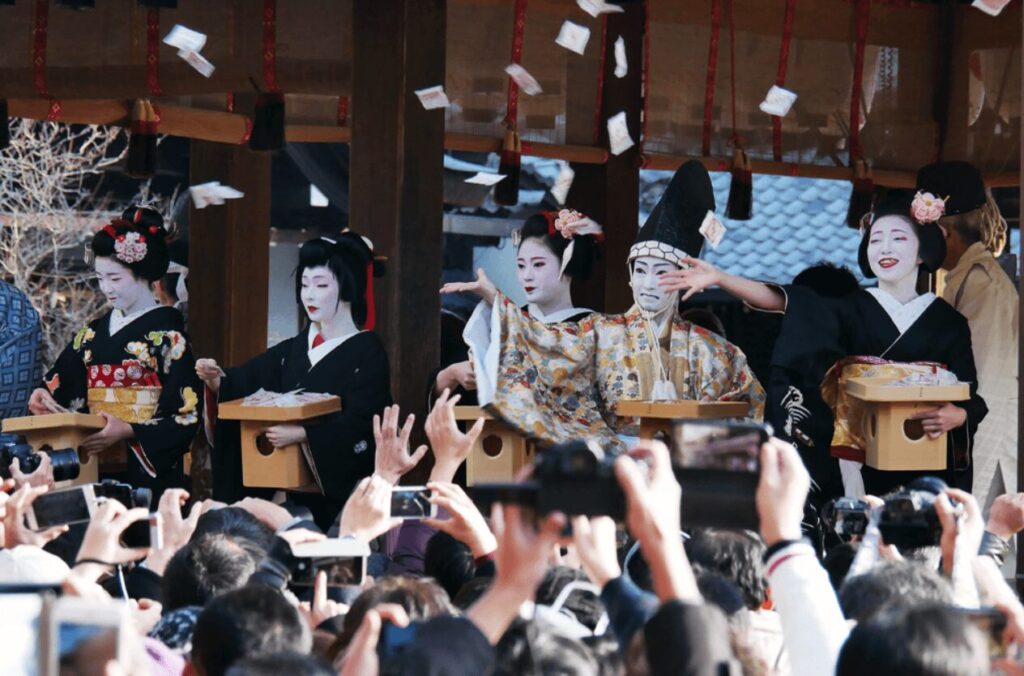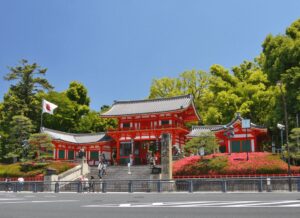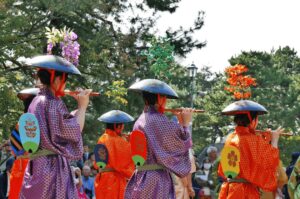8 Must-Visit Festivals in Kyoto
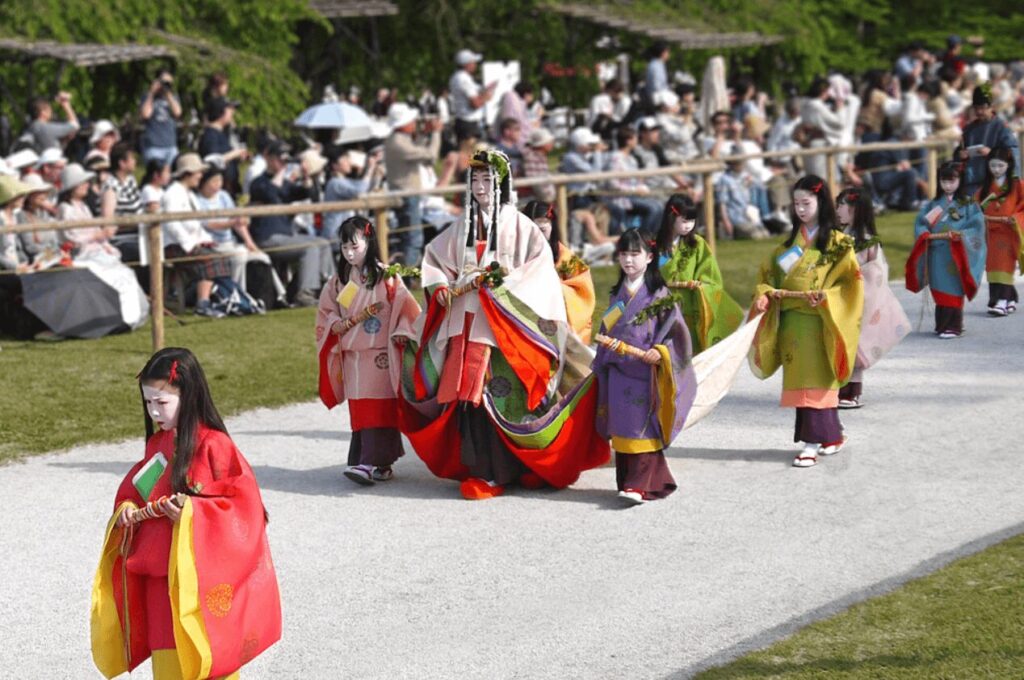
Kyoto’s festivals are a must-visit, especially for foreign tourists new to Japan.
The festivals are conveniently listed in order of the dates they're held on.
Be sure to use this list when planning your travel itineraries!
While some festivals are idyllic and meditative, some can be energetic and boisterous.
- Setsubun Festival (節分祭) - February
- Oka Sai Cherry Blossom Festival (桜花祭) - April
- Aoi Matsuri (葵祭) - May
- Yabusame Shinji (流鏑馬神事) - May
- Gion Matsuri (祇園祭) - July
- Kyoto Gozan Okuribi (京都五山送り火) - August
- Jidai Matsuri (時代祭) - October
- Kurama Fire Festival (鞍馬の火祭) - October
The Japanese word for festivals is matsuri (祭り) which is why you see a lot of “matsuri” in the list above.
It was originally derived from matsuri (祀り) with the same pronunciation, meaning “to enshrine” or “to worship”.
FEBRUARY
1. Setsubun Festival 節分祭 - experience the Japanese tradition of mamemaki / bean-throwing
Setsubun is celebrated in Japan in the beginning of February, marking the day before spring.
The tradition involves dispelling evil spirits and bad luck, and cleansing the home and family for the upcoming year.
The tradition includes mamemaki where soybeans are scattered and people shout “oni wa soto, fuku wa uchi” meaning bad luck / ogre out, blessings in.
Shrines and temples around Japan hold special festivals for setsubun, and several of these festivals are popular in Kyoto.
Date: Setsubun (2 or 3 February, depending on the year)
Location: Heian Shrine, Ishimizu Hachimangu Shrine, Yoshida Shrine, Rozanji Temple
APRIL
2. Oka Sai Cherry Blossom Festival (桜花祭) - be surrounded by the beautiful cherry blossoms of Kyoto
Oka Sai is a sakura festival involving cherry blossom processions.
It is said to be Kyoto’s longest running festival, taking place every year for the past thousand years since 985.
There are more than 400 trees and 60 different types of cherry blossom trees in the shrine’s precincts.
Understandably, the shrine’s symbol is also a cherry blossom flower.
Not only do visitors get to enjoy the sakura flowers blossom, there is also the opportunity to buy food and drinks from local vendors on-site.
Date: 10 April
Location: Hirano Shrine (within walking distance of Kinkakuji and Kitano Tenmangu)
MAY
3. Aoi Matsuri (葵祭) - for a time travel back in time
Aoi Matsuri is one of Kyoto’s three most famous festivals, along with Gion Matsuri and Jidai Matsuri.
“Aoi” is Hollyhocks in Japanese, and the festival is named after the Hollyhock leaves that are worn by the people in the procession.
This procession is a large parade with over 500 people dressed in aristocratic style reminiscent of the Heian era.
The festival’s official name remains Kamo Matsuri because of its association with the Kamo shrines.
Date: Annually on 15 May
Location: Kyoto Imperial Palace → Shimogamo Shrine → Kamigamo Shrine

MAY
4. Yabusame Shinji (流鏑馬神事) - be astounded by the skilled archers on horseback
Yabusame Shinji is one of the various ceremonial preparations that take place in the first week of May, before the Aoi Matsuri.
Yabusame Shinji, or Mounted Archery Ritual, is a performance to pray for the safety of the grand procession and to purify the parade route.
Japanese archers on horseback gallop down a 500 metre lane whilst firing arrows at three successive targets that are 100 metres away.
Successfully hitting a target is thought to bring good luck.
Date: Annually on 3 May
Location: Shimogamo Shrine
JULY
5. Gion Matsuri (祇園祭) - a must-visit festival for its thousand-year long history
Gion Festival / Matsuri is held at the Yasaka Shrine every year, and it takes place over the entire month of July.
There are many events at the festival, but the grand procession of floats, Yamaboko Junko, is especially beautiful, and it is sometimes called mobile art museums.
What makes Gion Matsuri so special is in its long and almost uninterrupted history dating back to 869.
The tradition began with a religious ceremony to appease the gods during the outbreak of an epidemic across Kyoto.
Date: Entire month of July
Location: Yasaka Shrine (Gion district), next to Maruyama Park
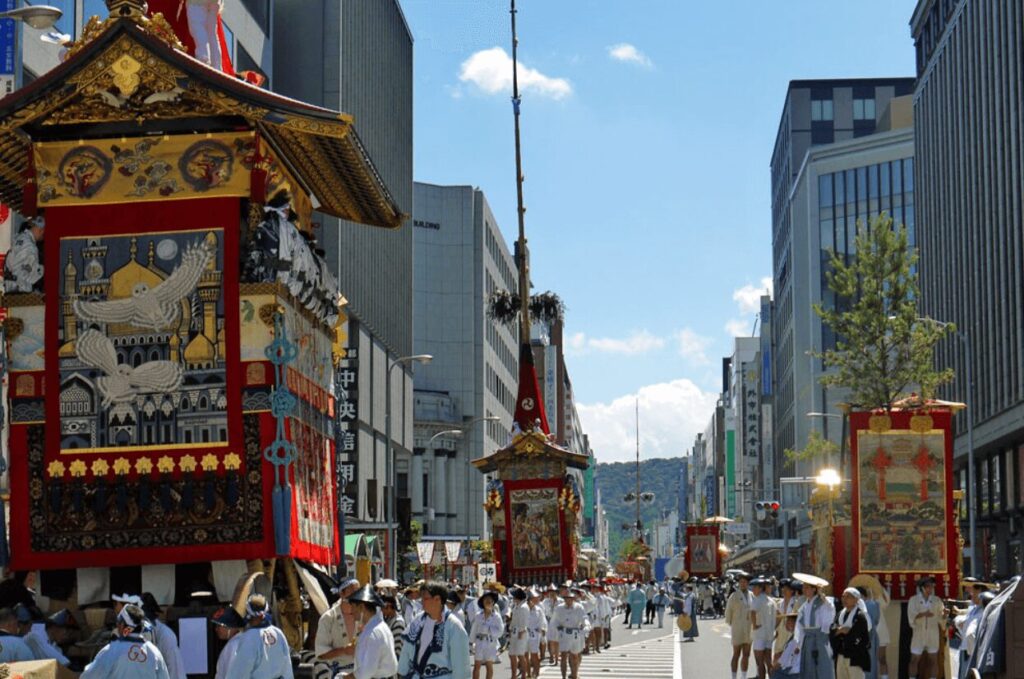
AUGUST
6. Kyoto Gozan Okuribi (京都五山送り火) - one of the most iconic events of summer
Kyoto Gozan Okuribi is one of Kyoto’s symbolic religious ceremonies of summer.
The bonfires are lit on five mountains around Kyoto, and it marks the culmination of Obon festivities.
It is believed that on the 16th of August, the dead will come back to visit their living relatives for the Obon period, before departing back to the spiritual world.
The okuribi, or send-off fires, are said to send off ancestors' spirits back to their homes.
Date: 16 August
Location: Daimonji (the main mountain where the first fire is lit)
The best place to view the ceremony is from the centre of the city, such as the banks of the Kamo River.
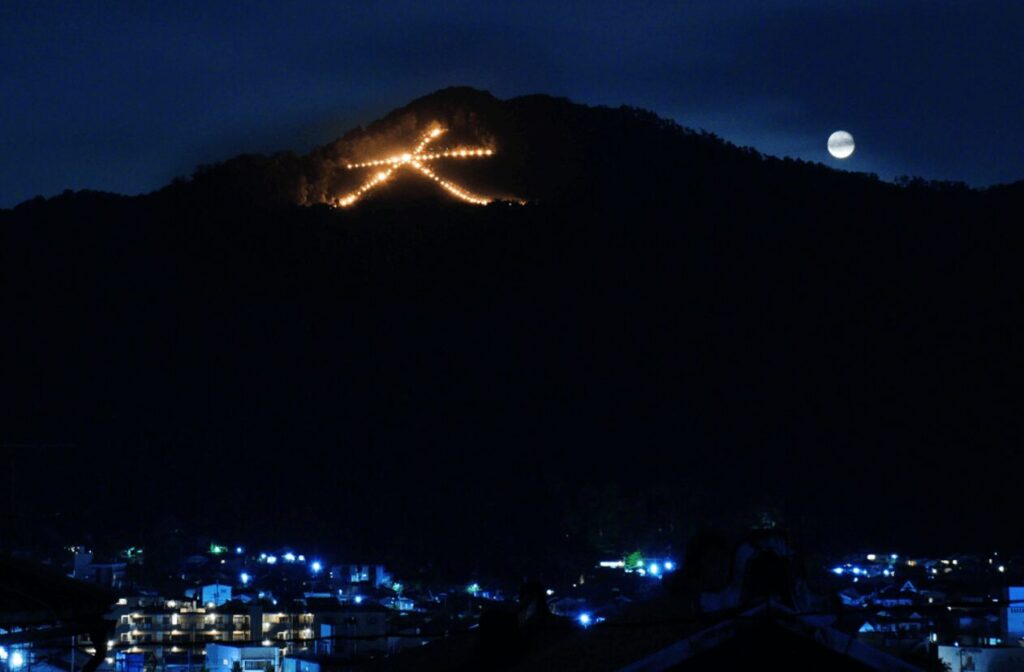
OCTOBER
7. Jidai Matsuri (時代祭) - watch the reverse chronological “Festival of Ages” pass by
Jidai Matsuri, along with Gion Matsuri and Aoi Matsuri, are one of the three most famous festivals in Kyoto.
It is a festival to commemorate the anniversary of Kyoto.
It consists of a large procession that proceeds from the Imperial Palace to Heian Shrine, stretching about 5 km.
Jidai Matsuri translated directly is “Festival of Ages”, and the participants are dressed in costumes from almost every era of Japanese history.
There are about 2,000 participants and it takes approximately 2 hours to watch the entire procession.
The Jidai Matsuri is held by the Heian Shrine, and both the festival and the shrine were established in 1895 to celebrate Kyoto’s long history as the former capital of Japan.
Refer to our Ninja Blog article What is the Jidai Festival in Kyoto? for more information!
Date: Annually on 22 October
Location: Imperial Palace → Heian Shrine
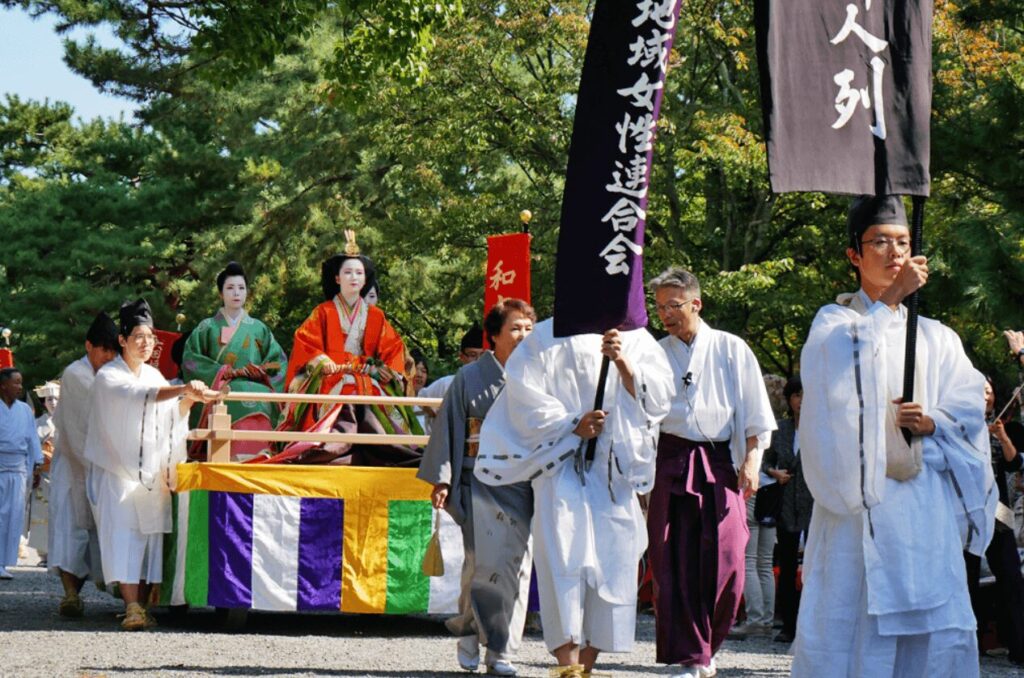
OCTOBER
8. Kurama Fire Festival (鞍馬の火祭) - for a little more warmth to the dropping temperatures
The Kurama Fire Festival is one of Kyoto’s most popular fire festivals, featuring a parade with hundreds of people bearing flaming torches.
This festival is held in the mountainous village of Kurama, and honours the Yuki Shrine and its spirits.
The parade is a reenactment of the ceremony that local villagers held to welcome the kami spirits of the shrine to the village.
Local men bearing huge flaming torches walk through the village of Kurama, and the torches are piled on top of each other to create a gigantic bonfire for the grand finale.
The festivities start at sunset and last until midnight.
Refer to our Ninja Blog article Find out Kyoto’s Kurama Fire Festival with a history of 1,000 years for more information!
Date: Annually on 22 October
Location: Kurama Station (on the streets just outside the station)
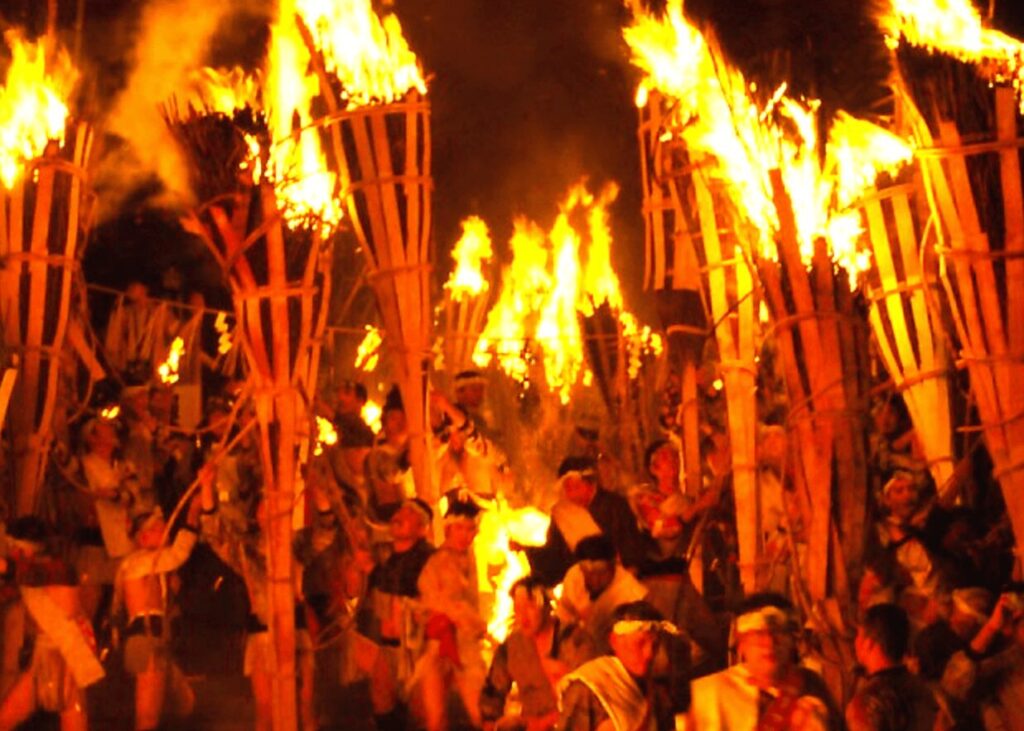
Summary
Here is a summary of the festivals according to months.
February: Setsubun Festival
April: Oka Sai Cherry Blossom Festival
May: Aoi Matsuri, Yabusame Shinji
July: Gion Matsuri
August: Kyoto Gozan Okuribi
October: Kurama Fire Festival, Jidai Matsuri
What are we?
We run Ninja Experience Cafe in Tokyo, Kyoto and Osaka, Japan.
Here you can immerse yourself in Japanese culture through experiencing ninja training.
Both adults and children are welcome to try their hand at defeating the ninja master inside the cafe.
The cafe is an indoor interactive zone, so it can be enjoyed even on rainy days.
If you are thinking "I want to be a real ninja too!” or interested in becoming a real ninja, please visit us.
Reservations can be made here.
Unauthorized copying and replication of the contents of this site, text and images are strictly prohibited.
